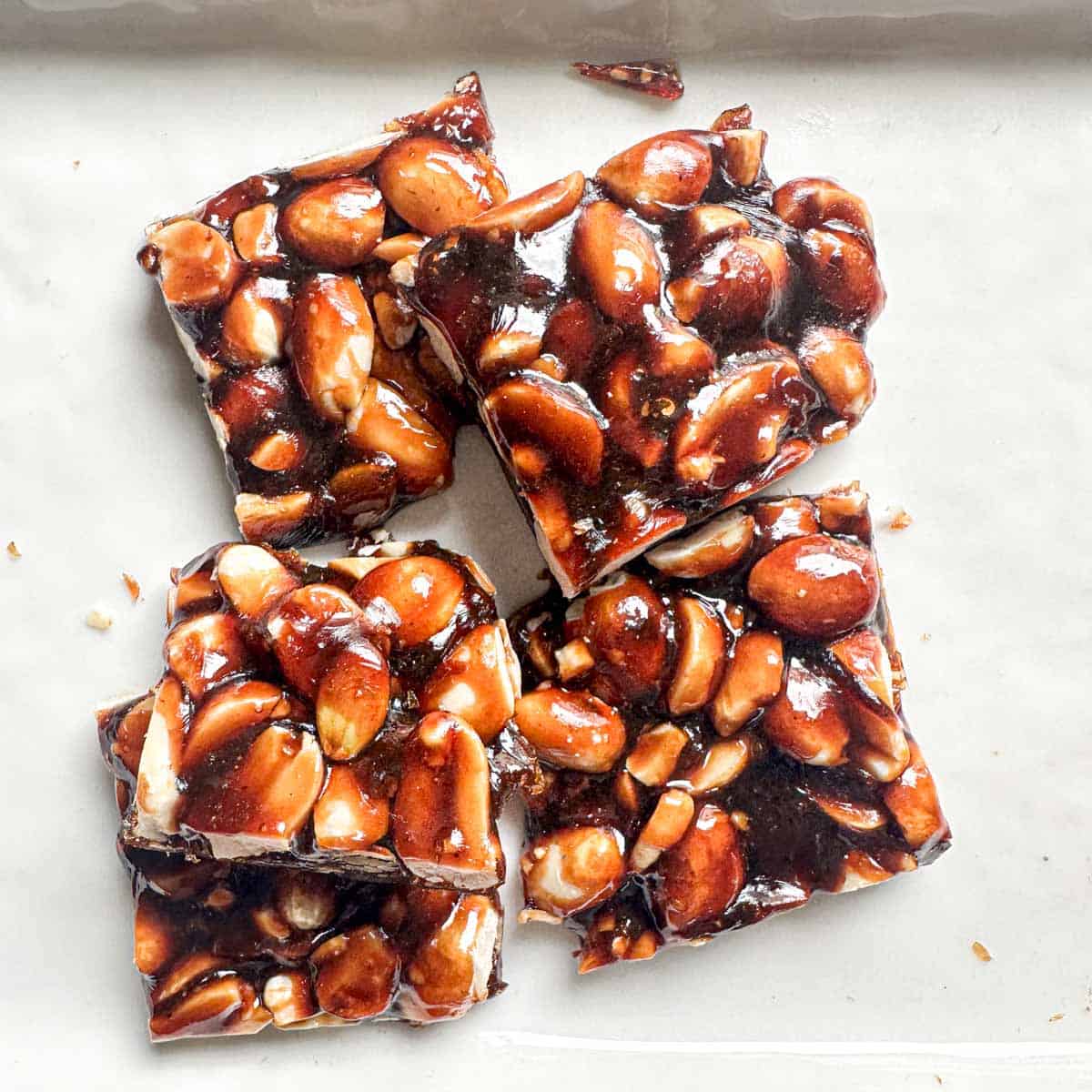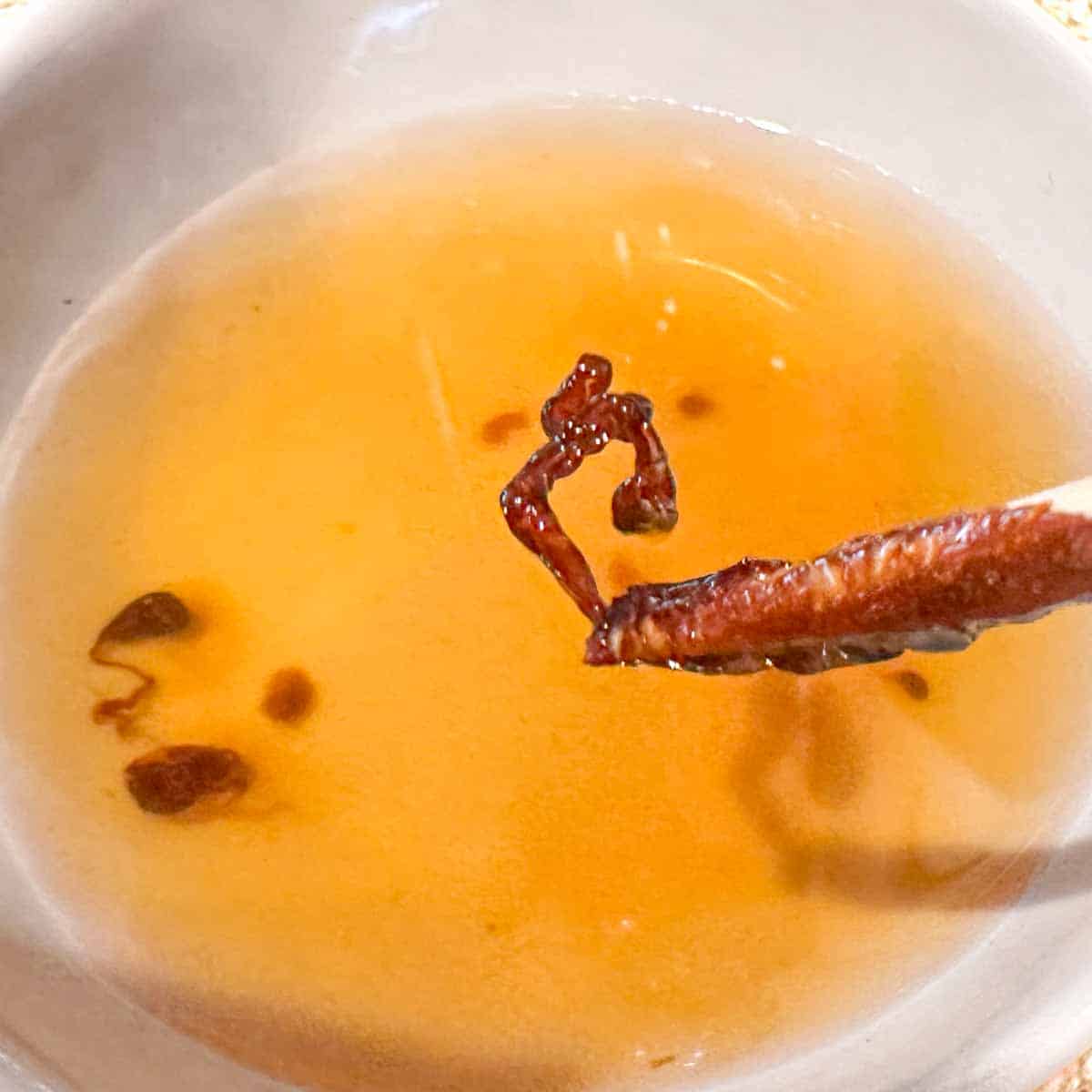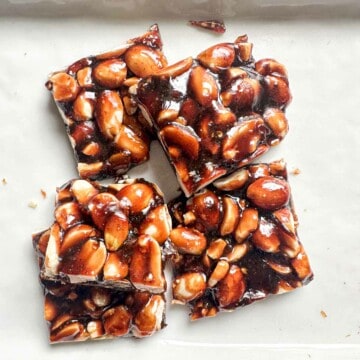What is jaggery?
Jaggery, also known as gur (Hindi) or vellam (Tamil), is unrefined cane sugar. I prefer getting jaggery in its powder form as it is easy to measure. Jaggery adds a deep molasses flavor to the peanut brittle that makes it sweet and complex. You can easily find jaggery powder or jaggery blocks online. If you want to learn more about jaggery and its substitutes checkout this blog post all about the ingredient.
Substitutes for peanuts
Chikkis can be made with a whole host of crunchy elements besides peanuts. Here are some alternatives that would work great in place of peanuts:
Pistachios (slivered or chopped) Blanched Almonds (slivered) Puffed Rice Sesame Seeds
Perfect temperature for chikkis
The hardest part of making chikkis is understanding when the dessert is done. This candy is so much easier to make if you have a candy thermometer to help guide you. It is important to get the chikki to the hard crack stage which lies between 300F and 310F to get it to be crunchy. However, because the temperature of the jaggery syrup rises rapidly, the instructions say to cut the heat at 290F as the jaggery will continue to increase in temperature from the residual heat of the pan. If you get beyond this temperature range, the chikkis will have a burned flavor, and if you are under this temperature, the chikkis will be chewy and sticky rather than crunchy.
How to make chikki without a candy thermometer
If you don’t have a candy thermometer, you can still make chikkis, although it may take a little bit of trial and error as you master figuring out the doneness. Simply have a small bowl with ice water nearby while making the jaggery syrup. As the jaggery starts bubbling, use a greased metal or wooden spoon to take a small bit and drop it in the ice cold water. If the jaggery syrup hardens into a candy structure, you are ready to cut the heat. If the jaggery syrup is still malleable and soft, the jaggery needs more time on the stove. As the syrup gets hotter, lower the heat so as not to burn the sugar and do more frequent checks for doneness.
Tips for making chikkis
Grease the top and bottom of two sheet trays to ensure that chikkis don’t stick. The sheet trays will help you flatten the brittle without having to directly touch the hot candy. Do not use a non-stick pan and plastic utensils. The jaggery syrup will get to a high heat so it is important not to use a pan with a non-stick coating that can degrade while making this candy. Again, with high heat, plastic utensils can melt or burn so avoid using them. Avoid mixing the jaggery sugar in the pot. Once jaggery and water start simmering on the stovetop, avoid mixing the syrup. If the syrup gets onto the sides of the pan, it can burn and crystalize before the rest of the sugar syrup is ready. Clean pots and pans with stuck brittle by boiling hot water. If there are bits of hardened and stuck-on caramel on the pots or spoons that you are using, it is helpful to add water to the pot and let it simmer to soften the caramel and loosen it from the pot. Use a candy thermometer to gauge the perfect timing to remove the candy. You can read here about the right temperature to take your chikkis out as well as tips to make chikkis without a candy thermometer. Store peanut chikkis at room temperature, not in the fridge. Storing the chikkis in the fridge will cause them to weep which means that there will be layers of water on the surface, which will cause them to soften and become an unpleasant texture.
Other recipes you will love
Homemade Diwali Sweets and Snacks Box Kaju Katli Khajur Burfi (Date and Nut Roll) Kesar Malai Peda Kesar Mango Ice Cream Pineapple Kesari






